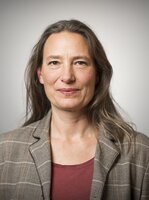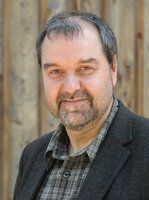Episode 11: What kind of trees do we need in future?
How to prepare a forest for climate change
05.01.2023

Climate change is taking its toll on forests: since 2018, nearly 400,000 hectares of forest stands have been lost to drought and pest infestation in Germany alone. There is no question: the forests must be made fit for the challenges of the coming years. But what will the forest of the future look like? Will there still be beech, oak, pine and spruce? Or will species still considered exotic today take over the reigns?
„For me, the future forest is not an artificial product that we can think of in this way. We would be guaranteed not to take into account important factors that will then emerge in future weather extremes. That's why my future forest is the one we already have now, but much closer to nature.“
Dr. Susanne Winter, WWF Germany
Only viable forests can fulfil the protective function for water and soil, contribute to biodiversity or serve as an essential sink for carbon dioxide emissions. In recent years, however, Germany's spruce forests in particular have proven to be not stable enough. The condition of pine and beech stands is also a cause for concern. The Federal Ministry of Agriculture has therefore made 900 million euros available annually to forest owners who convert their forests and thus maintain or increase the ecosystem services of the forest. The main focus is on developing more natural mixed forests, which have proven to be more resilient.
Experts differ in their opinions on exactly how this transformation should take place. While some call for natural development processes to be used in forest conversion, others say that natural forest development cannot keep pace with the rapidly advancing climate change and that forest conversion must therefore be managed more strongly.
One reason for this is the demand for wood: Germany currently needs around 80 million cubic meters of harvested wood per year, for example for timber construction, paper production and as a source of energy - and this demand should be met from domestic forests as far as possible so as not to cause leakage effects. Will this still be possible in the future?
In addition, forests had stored about seven percent of Germany's greenhouse gas emissions by 2019. This important sink function is currently in danger of being lost. How can the storage function of forests be increased again?
In this podcast episode, our guests Susanne Winter, Head of the Forest Programme at WWF Germany, and Andreas Bolte, Head of the Thünen Institute for Forest Ecosystems, create a picture of the forest of the future. They talk about the advantages of small-scale ownership in Germany for forest conversion and the opportunities and risks of invasive species. It is about reducing the demand for fresh wood and a cascade use of wood, about common good standards for the allocation of subsidies and an acceleration of the transformation process, which must take place above all outside the forest. After all, 30 per cent of fresh wood is currently still being burned - a far too large amount from a climate perspective.
Sources and further readings
- Thünen explains: Why Forest Use is also Climate Protection
- Beck-O’Brien M, Egenolf V, Winter S, Zahnen J, Griesshammer N. (2022) Alles aus Holz – Rohstoff der Zukunft oder kommende Krise; Ansätze zu einer ausgewogenen Bioökonomie. WWF Deutschland (in German)
- Winter S (2021) Wenn Wald wieder wild wird, wwf.de, Hintergrund (in German)
- Interview with Susanne Winter on the forest at "Jung & Naiv" – Folge 586 (in German)
- Bolte A, Höhl M, Hennig P, Schad T, Kroiher F, Seintsch B, Englert H, Rosenkranz L (2021) Zukunftsaufgabe Waldanpassung. AFZ Der Wald 76(4):12-16 (in German)
- Bundesamt für Naturschutz (BfN) (2020) Wälder im Klimawandel: Steigerung von Anpassungsfähigkeit und Resilienz durch mehr Vielfalt und Heterogenität. Bonn (in German)
- Viering K (2022) Fichtensterben in Deutschland - Der Brotbaum verdurstet. Spektrum.de, Hintergrund (in German)
- Wissenschaftlicher Beirat für Waldpolitik (2021): Die Anpassung von Wäldern und Waldwirtschaft an den Klimawandel. Berlin (in German)

Dr Susanne Winter is a forest ecologist and heads the forest programme at the nature conservation organisation WWF Germany. The focus of her work is on improving forest management in order to preserve biodiversity and climate protection services of forests.

Prof. Dr Andreas Bolte heads the Thünen Institute of Forest Ecosystems in Eberswalde and teaches forest ecology at the University of Göttingen. In his research, the forest scientist focuses primarily on beech forests and the adaptation of forests and forest management to the consequences of climate change.







Comments (0)
No comments found!